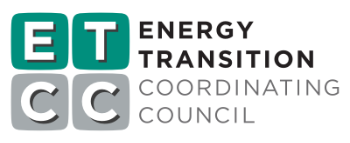Central Valley Research Homes: Phase 2_Radiant_ET_Report_Summer2018_Supplement
Project Number ET13PGE1070 Organization PG&E End-use HVAC Sector Residential Project Year(s) 2013 - 2018For four years (2015 to 2018) one of the Central Valley Research Homes (CVRH) in Stockton, CA has been used to evaluate radiant ceiling panel systems in a residential application. The radiant ceiling panel systems tested consists of two brands of panels. In addition, four air-to-water heat pumps (AWHPs) and four radiant panel distribution configurations have been evaluated. A high-performance ducted heat pump system (referred to as the “Reference HP”) was also evaluated as a performance benchmark for the radiant systems.
Key objectives of the first phase of testing were to evaluate comfort performance, energy use, panel thermal performance, and develop “best practices” for AWHPs coupled with radiant ceiling panels (https://www.etcc-ca.com/reports/field-assessment-residential-radiant-ceiling-panel-space-conditioning-systems). The primary goals for phase 2 testing were to evaluate additional AWHPs and configurations, documenting the comfort performance and energy usage of each relative to previously evaluated systems (https://www.etcc-ca.com/reports/central-valley-research-homes-phase-2-assessment-residential-radiant-ceiling-panel-space).
This report is supplemental to the cooling season findings of the Phase 2 report, evaluating an additional variable capacity AWHP and comparing performance to previous cooling seasons.
Key Findings
- Comfort comparisons between radiant and conventional systems: In summer 2018 the radiant system had some comfort issues, but all due to overcooling of the space, while previously reported summer 2017 results showed some undercooling.
- Overall system performance comparisons between the radiant system and the Reference HP: Both variable capacity AWHP units, as well as the Reference HP, achieved both full load EER and daily EER values higher than their manufacturer ratings. The full load and daily EERs of the Reference HP were 11.8 and 12.6, respectively. The impacts of standby energy use and control methods could be seen through comparison of the full load and daily EER values. While the PHNIX AWHP had similar full load and daily EERs (11.7 and 11.6, respectively) the Chiltrix AWHP had a significant difference in full load and daily EER (14 and 12.5, respectively). This difference between the full load and daily EER values was largely due to the Chiltrix running pump and compressor at full speed at the start of every cycle. After a few minutes of operation, compressor and pump speed would begin to vary and achieve higher mid-cycle EERs, but the EER for the beginning of the cycles were very low. The daily EER of the Chiltrix surpasses the PHNIX and is on par with the high-performance Reference HP, and the full load EER of the Chiltrix surpasses both the PHNIX and the Reference HP.
- Energy comparison between radiant and Reference system configurations: The radiant system in summer 2018 with the Chiltrix achieved daily average energy use levels (10.1 kWh) slightly better than that of the Reference HP (12 kWh) and the radiant system with the PHNIX (12.8 kWh). Though daily average standby energy and pump energy were slightly increased with the Chiltrix (0.14 kWh) over the PHNIX (0.1 kWh), both values were still lower than those of the Reference HP (0.2 kWh). The daily average compressor energy use of the Chiltrix (9.3 kWh) was significantly less than that of the PHNIX (12.3 kWh) and the Reference HP (11 kWh). With a more optimized compressor and pump control strategy (instead of running the compressor and pump at max speed at the start of each cycle), the Chiltrix would achieve even greater performance.
